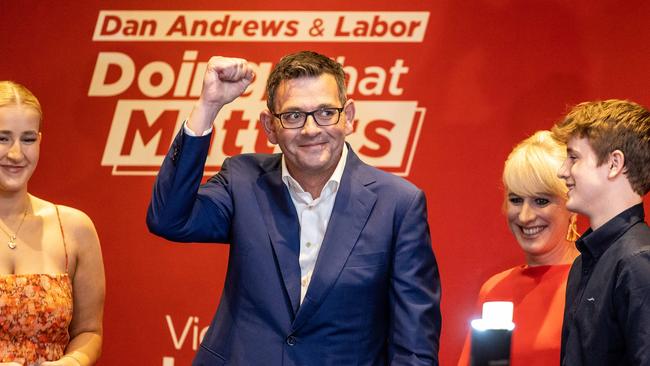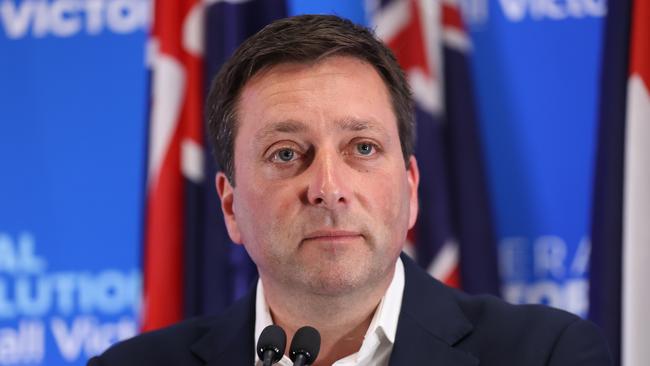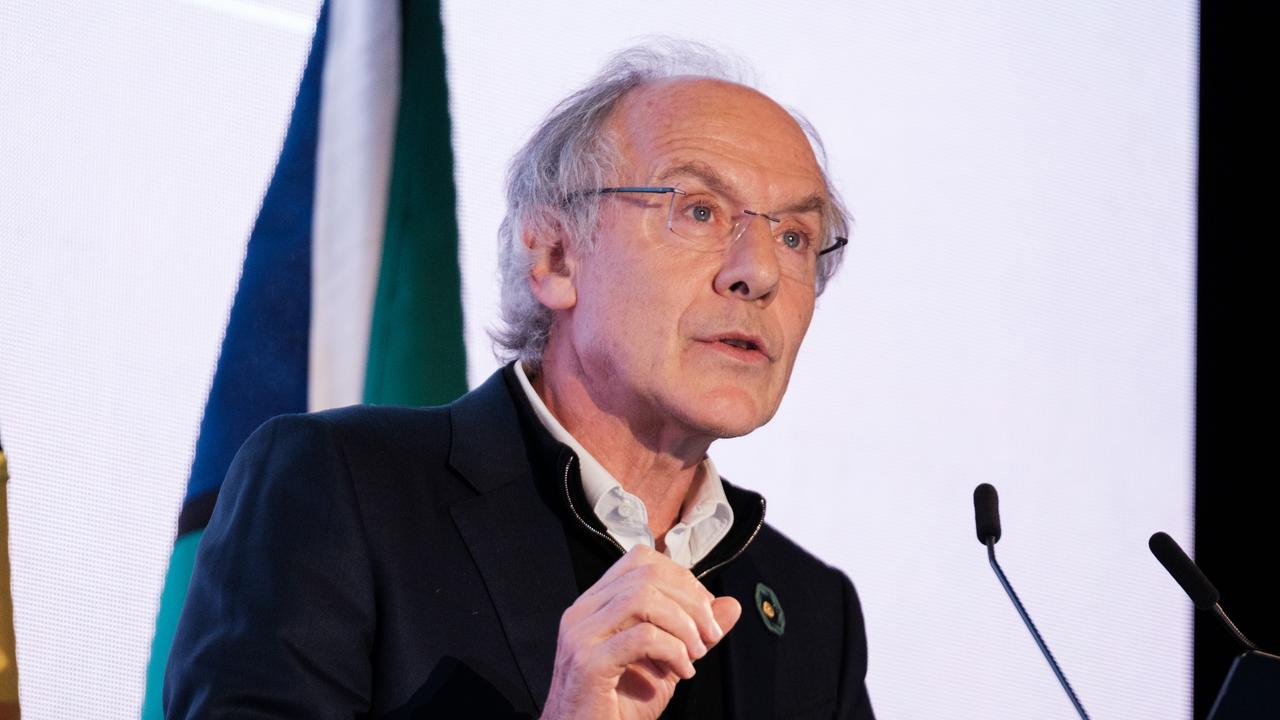Shannon Deery analysis: How the election was won and lost
Despite internal fears of a substantial swing away against Labor, it is now the Liberals left to lament what caused the voter backlash against their party.
State Election
Don't miss out on the headlines from State Election. Followed categories will be added to My News.
Before polls closed on Saturday, key Labor figures couldn’t see a clear path to victory.
At best, they thought the party was on track to win 41 seats, four short of the 45 needed for majority government.
The result exceeded all expectations, and Labor held on to key seats across the west of Melbourne, despite fears of an angry backlash in its traditional heartland.
The government was also bracing for serious challenges in the sandbelt region that traditionally fluctuates with changes of government, and across Melbourne’s east and southeast.
It is in these regions the Liberal Party had hoped to find a path to glory, but failed.
Instead, despite being on track to record the lowest winning primary vote yet, and despite massive swings against it in key seats, Labor held on to seats in the west and gained ground in the east.
It did so despite what Labor insiders say was increasing animosity towards Premier Daniel Andrews.

Focus group research repeatedly warned that the Premier’s popularity was falling.
But it also showed voters respected his work ethic and ability to get things done.
“Genuinely, lots of people may not like Dan but they know he will do things like removing level crossings in the burbs and build new train lines,” one source said.
“They seem to forget that John Howard wasn’t loved but he was respected and was one of the longest serving prime minister’s we’ve had.
“Mainly because he got stuff done and was a conviction politician. There are more than a few similarities with Dan.”
Before the campaign, Labor embarked on the most comprehensive research program the Victorian branch had ever conducted. It influenced key messaging, both positive and negative, where to target ads, and what issues to focus on.
Labor knew it was on a winner with its signature policy of bringing back the SEC, and was confident the Suburban Rail Loop had broad appeal.
Importantly it showed that voters had little to no idea about Opposition Leader Matthew Guy.
Labor called the Liberal leader the party’s “cuts guy”, despite there being no evidence to back up the claim.
A key theme that emerged in Labor’s research was that these people didn’t have much information on Matthew Guy, prompting them to run negative advertisements.
“We filled in the blanks,” the insider said. “Matthew Guy was unknown, people didn’t have a view and we needed to shake them
“The campaign team worked for two months shaping that view through targeted digital advertising.
“The memes seemed funny at the time but they were part of that strategy.”

Ultimately, Labor was able to do a better job of informing Victorians about Guy than his own party was.
The party also focused its research on understanding key target seats and what was needed to win over a larger than usual proportion of undecided voters.
Melbourne’s sandbelt, eastern suburbs and the outer west were a particular focus.
“There were a lot of people trying to get them to change tactics but they stuck to the plan of winning the undecideds in those target seats and that pathway to victory,” a source said.
Research also showed that Victorians didn’t want to talk about the pandemic, which was why it didn’t feature in either party’s strategies.
However former Labor strategist Kos Samaras said issues around the pandemic were a key reason the Liberal Party was unable to make headway in Melbourne’s east.
“Eastern Melbourne was lost via an unconventional road because the Liberals lost their right flank,” he said.
“By amplifying issues around the pandemic, they activated a portion of their base which they were initially wrestling with during 2020.
“Having activated this group, they then opened a door to the Right wing minor parties, losing votes to them and not the Labor Party.
“Labor’s primary in these seats hardly moved, enabling Labor to capitalise on the Liberals’ error. This is where the election was won and lost.”
Liberal campaign figures insist the campaign was a success.
They say that as recently as September the party was on track for a West Australian style wipe-out.
Tracking showed improvements across key seats, but a string of controversies have been blamed for failing to pick-up vital votes.
The first was the referral of Guy to the state’s corruption watchdog over allegations his former chief of staff tried to skirt donation laws to increase his pay.
The issue neutralised the corruption controversy surrounding Mr Andrews despite the Liberals’ efforts to highlight his involvement in four separate inquiries.
Another was key MPs being caught in a salacious social media scandal.

Shadow treasurer David Davis’s inability to outline the Coalition’s total election commitment costings was another.
Internal party problems and resignations of senior figures were also to blame.
But critics of the campaign say Guy failed to earn enough credibility, and left key themes too late. A failure to develop key policies, stick to simple messaging and preselect candidates has also been blamed.
The decision to knife former leader Michael O’Brien was being blamed as the party’s biggest pre-election mistake, as was its inability to seriously engage with multicultural communities, middle Australia and Millennials.
If it continues to fail to engage with those communities, the Liberal Party will struggle to ever form government in Victoria again.
“The Liberal Party faces an existential crisis,” one senior Liberal said. “They have a clear choice. They can either renew, rebuild and move towards the centre ground of politics or they can move further to the fringes of society.
“Elections are won in the middle by engaging with the mainstream and not pandering to the worst elements of our society, no matter how loud and noisy their voices are.
“The leadership team that drove this party over the cliff needs to recede quietly into the background now. The time for renewal has arrived.
“What worked well during the Howard and Kennett governments in the 1990s will not automatically work in 2022.
“The time for complete and utter renewal of the party has arrived. Make no mistake, the dead wood needs to go and if they don’t then will need to be removed.”





